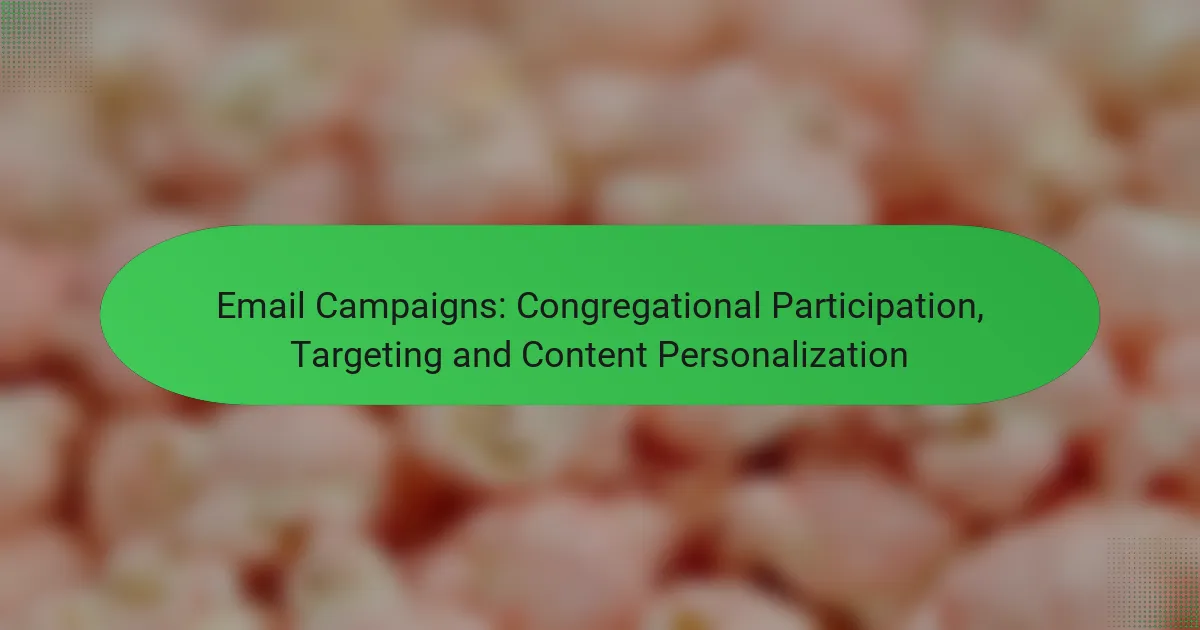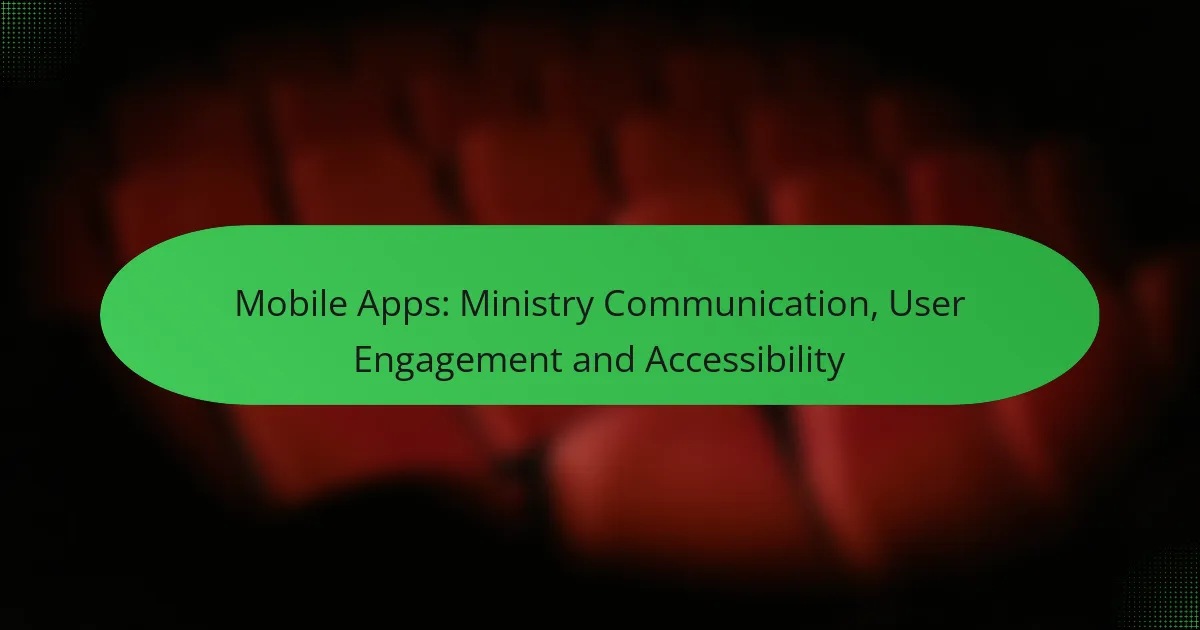Email campaigns can significantly enhance congregational participation by delivering engaging and relevant content tailored to the audience’s needs. By implementing effective targeting strategies and personalizing messages based on individual preferences and behaviors, organizations can boost engagement and conversion rates, ensuring that their communications resonate with recipients.
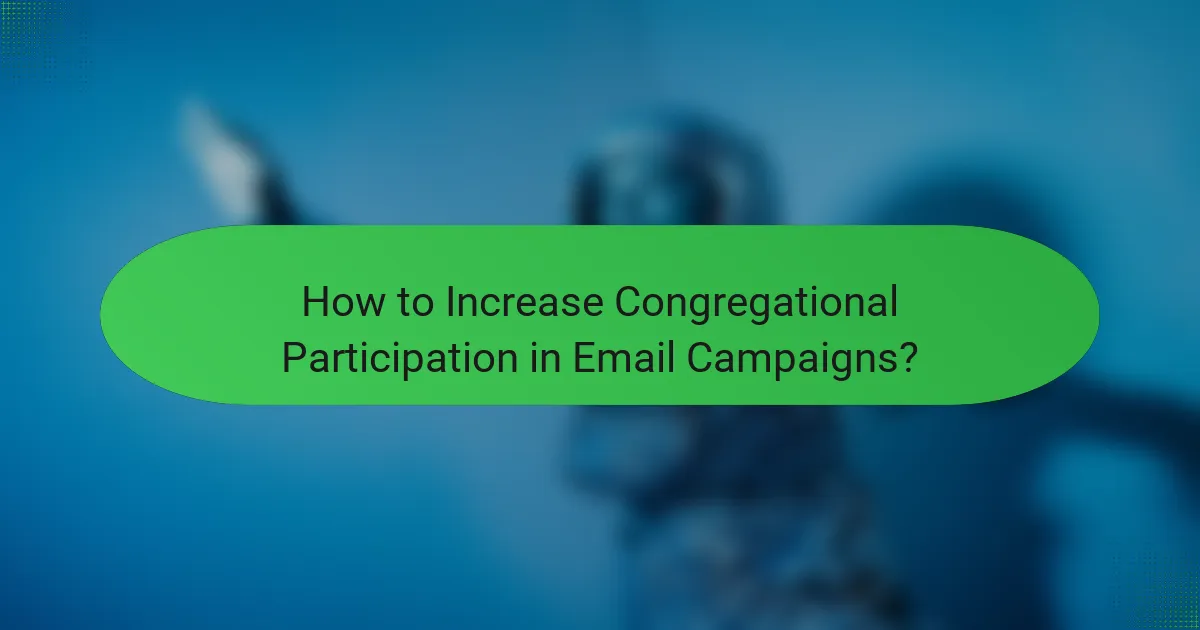
How to Increase Congregational Participation in Email Campaigns?
To boost congregational participation in email campaigns, focus on creating engaging content that resonates with your audience. Tailoring your messages and utilizing effective strategies can significantly enhance response rates and involvement.
Engaging subject lines
Engaging subject lines are crucial for capturing attention and encouraging opens. Aim for brevity and clarity, using action-oriented language that reflects the email’s content. For example, “Join Us for This Sunday’s Community Service!” is more compelling than a generic “Service Announcement.”
Consider using personalization by including the recipient’s name or referencing past interactions. A/B testing different subject lines can help identify what resonates best with your audience.
Personalized content
Personalized content increases relevance and connection with recipients. Use data from previous interactions to tailor messages, such as referencing specific events or groups the recipient is involved with. This approach can lead to higher engagement rates.
Segment your email list based on demographics or interests to deliver targeted content. For instance, families with children might appreciate information about youth programs, while older members may prefer updates on community outreach initiatives.
Incentives for participation
Offering incentives can motivate congregants to engage with your email campaigns. Consider providing exclusive access to events, discounts on community activities, or entry into a raffle for participating in surveys or events.
Clearly communicate these incentives in your emails to encourage participation. For example, “Respond to this email for a chance to win a gift card to our local coffee shop!” can drive more responses.
Feedback loops
Establishing feedback loops allows congregants to share their thoughts and suggestions, fostering a sense of community. Include surveys or polls in your emails to gather insights on what members want to see more of in future communications.
Make it easy for recipients to provide feedback by using simple forms or direct reply options. Acknowledging and acting on their feedback can enhance trust and participation in future campaigns.
Community events promotion
Promoting community events through email is an effective way to increase participation. Highlight upcoming gatherings, workshops, or volunteer opportunities, ensuring to include essential details like date, time, and location.
Utilize visually appealing graphics and clear calls to action, such as “RSVP Now” or “Learn More,” to encourage immediate responses. Regularly updating your congregation on events can keep them engaged and informed about community activities.
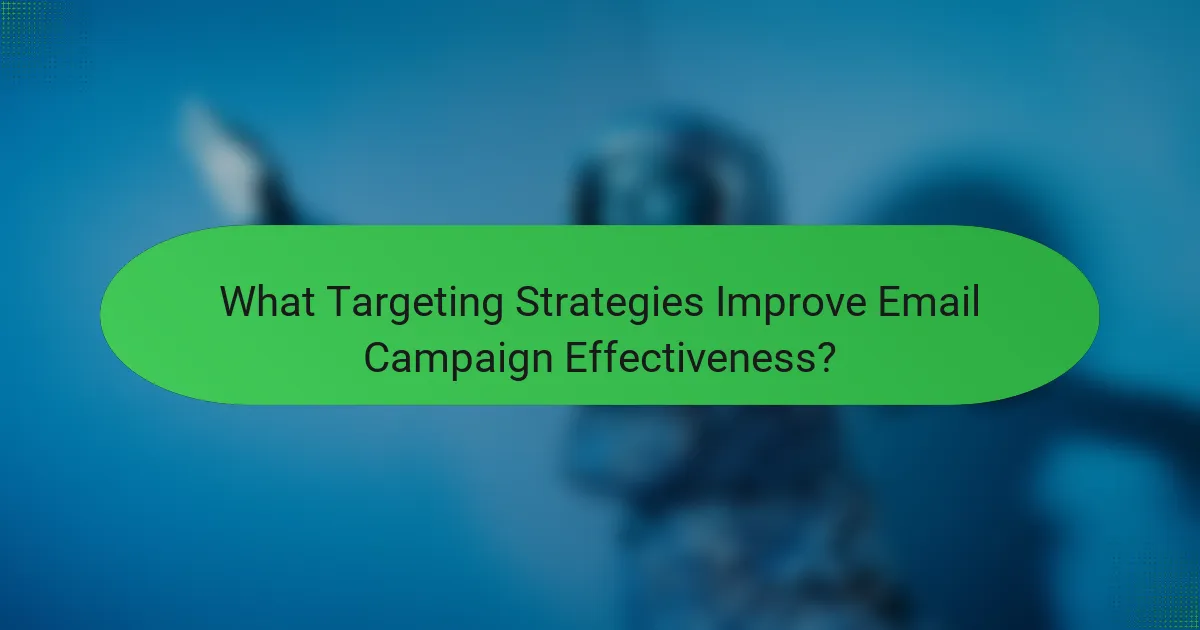
What Targeting Strategies Improve Email Campaign Effectiveness?
Effective targeting strategies enhance email campaign performance by ensuring messages reach the right audience with relevant content. Utilizing segmentation, behavioral insights, geolocation, and interests can significantly increase engagement and conversion rates.
Segmentation by demographics
Demographic segmentation involves categorizing your audience based on characteristics such as age, gender, income, and education. This approach allows for tailored messaging that resonates with specific groups, increasing the likelihood of engagement.
For example, a church might send different newsletters to young families compared to seniors, focusing on family activities for the former and community support for the latter. This targeted approach can lead to higher open and click-through rates.
Behavioral targeting
Behavioral targeting leverages data on past interactions to personalize email content. By analyzing how recipients engage with previous emails, you can send tailored messages that reflect their interests and behaviors.
For instance, if a congregant frequently attends youth events, sending them information about upcoming youth programs can enhance their connection and participation. This method often results in improved engagement and loyalty.
Geolocation-based targeting
Geolocation-based targeting uses the physical location of recipients to customize email content. This strategy is particularly effective for local events or services, ensuring that the information is relevant to the recipient’s area.
For example, a church might promote a community service event specifically to members living in the surrounding neighborhoods. This localized approach can drive higher attendance and participation rates.
Interest-based segmentation
Interest-based segmentation focuses on the specific preferences and interests of your audience. By collecting data on what topics or activities congregants engage with, you can create targeted campaigns that speak directly to their passions.
For instance, if a segment of your audience shows interest in volunteer opportunities, sending them regular updates about service projects can keep them engaged and encourage participation. This strategy fosters a stronger community connection and enhances overall engagement.
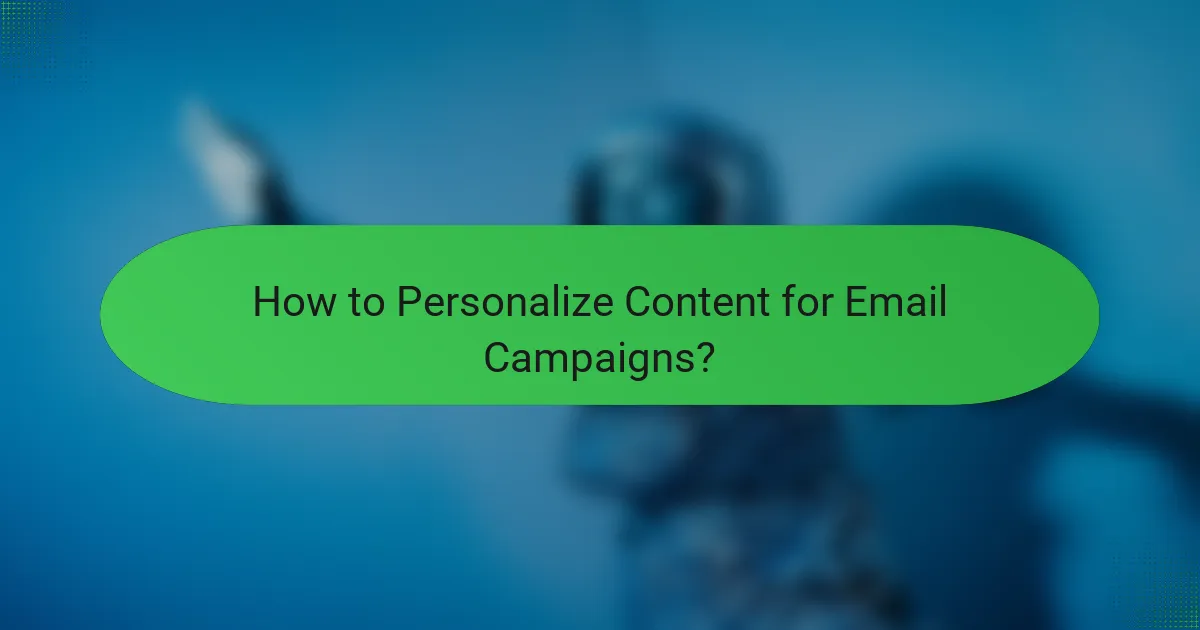
How to Personalize Content for Email Campaigns?
Personalizing content for email campaigns involves tailoring messages to individual recipients based on their preferences, behaviors, and demographics. Effective personalization can significantly enhance engagement and conversion rates, making your campaigns more relevant and impactful.
Dynamic content insertion
Dynamic content insertion allows you to customize parts of your email based on recipient data. For example, you can change images, text, or offers based on the user’s location or past interactions. This technique increases relevance, as recipients see content that resonates with their specific interests.
To implement dynamic content, use email marketing platforms that support this feature. Ensure your data is clean and up-to-date to maximize effectiveness. A/B testing different dynamic elements can help you identify what works best for your audience.
Personalized recommendations
Personalized recommendations suggest products or content to recipients based on their previous behaviors or preferences. For instance, if a user frequently engages with certain types of content, you can recommend similar articles or products in your emails. This approach fosters a sense of connection and increases the likelihood of conversions.
Utilize algorithms or simple rules to generate recommendations. Regularly update these suggestions based on user activity to keep them relevant. Consider segmenting your audience to tailor recommendations further, enhancing the personalization effect.
Tailored messaging
Tailored messaging involves crafting your email’s language and tone to fit the recipient’s profile. This could mean using a more formal tone for corporate clients or a casual tone for younger audiences. By aligning your messaging with the recipient’s expectations, you increase engagement and response rates.
To create tailored messaging, analyze your audience segments and their preferences. Use insights from past interactions to inform your tone and style. Always test different messaging approaches to see which resonates best with each segment.
Utilizing user data
Utilizing user data is crucial for effective personalization in email campaigns. Collect data through sign-up forms, surveys, and user interactions to build comprehensive profiles. This information can guide your personalization efforts, ensuring that content aligns with user interests and behaviors.
Be transparent about data collection and comply with regulations like GDPR or CCPA. Regularly review and update your data to maintain accuracy. Consider implementing a feedback loop where users can update their preferences, further enhancing personalization.

What Metrics Should Be Used to Measure Success?
To measure the success of email campaigns, focus on key metrics that indicate how well your audience is engaging with your content. These metrics include open rates, click-through rates, conversion rates, and engagement metrics, each providing insights into different aspects of campaign performance.
Open rates
Open rates reflect the percentage of recipients who opened your email, serving as a primary indicator of subject line effectiveness and audience interest. A typical open rate for email campaigns can range from 15% to 30%, depending on the industry and audience segmentation.
To improve open rates, consider A/B testing different subject lines and sending times. Avoid spammy language and ensure your sender name is recognizable to enhance trust and increase the likelihood of your emails being opened.
Click-through rates
Click-through rates (CTR) measure the percentage of recipients who clicked on one or more links within your email. This metric is crucial for understanding how effectively your content drives action and engagement. Average CTRs generally fall between 2% and 5%, but this can vary widely based on the email’s purpose and audience.
To boost click-through rates, include clear calls to action (CTAs) and ensure that links are easily accessible. Using engaging visuals and concise text can also encourage recipients to interact with your content.
Conversion rates
Conversion rates indicate the percentage of recipients who completed a desired action after clicking through from your email, such as making a purchase or signing up for an event. This metric is vital for assessing the overall effectiveness of your email campaign in achieving its goals.
To enhance conversion rates, tailor your landing pages to match the email content and ensure a seamless user experience. Use strong CTAs and consider offering incentives, such as discounts or exclusive content, to motivate recipients to convert.
Engagement metrics
Engagement metrics encompass various indicators of how recipients interact with your emails, including reply rates, social shares, and time spent reading. These metrics provide a deeper understanding of audience interest and can inform future content strategies.
To improve engagement, personalize your emails based on recipient preferences and behavior. Encourage feedback and interaction by asking questions or prompting discussions, which can foster a stronger connection with your audience.
